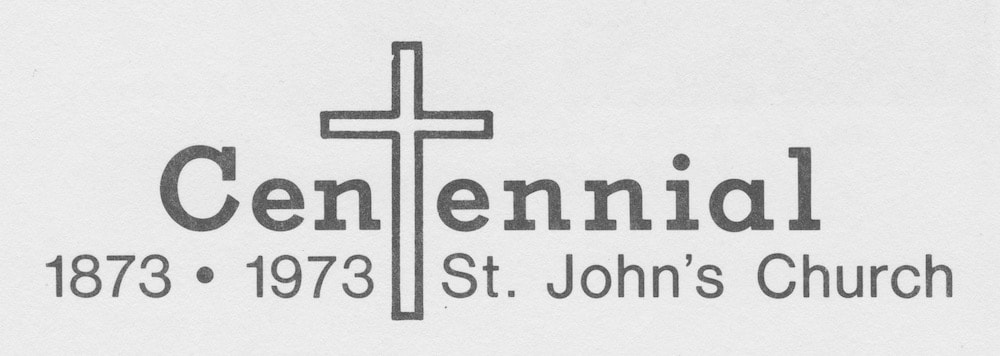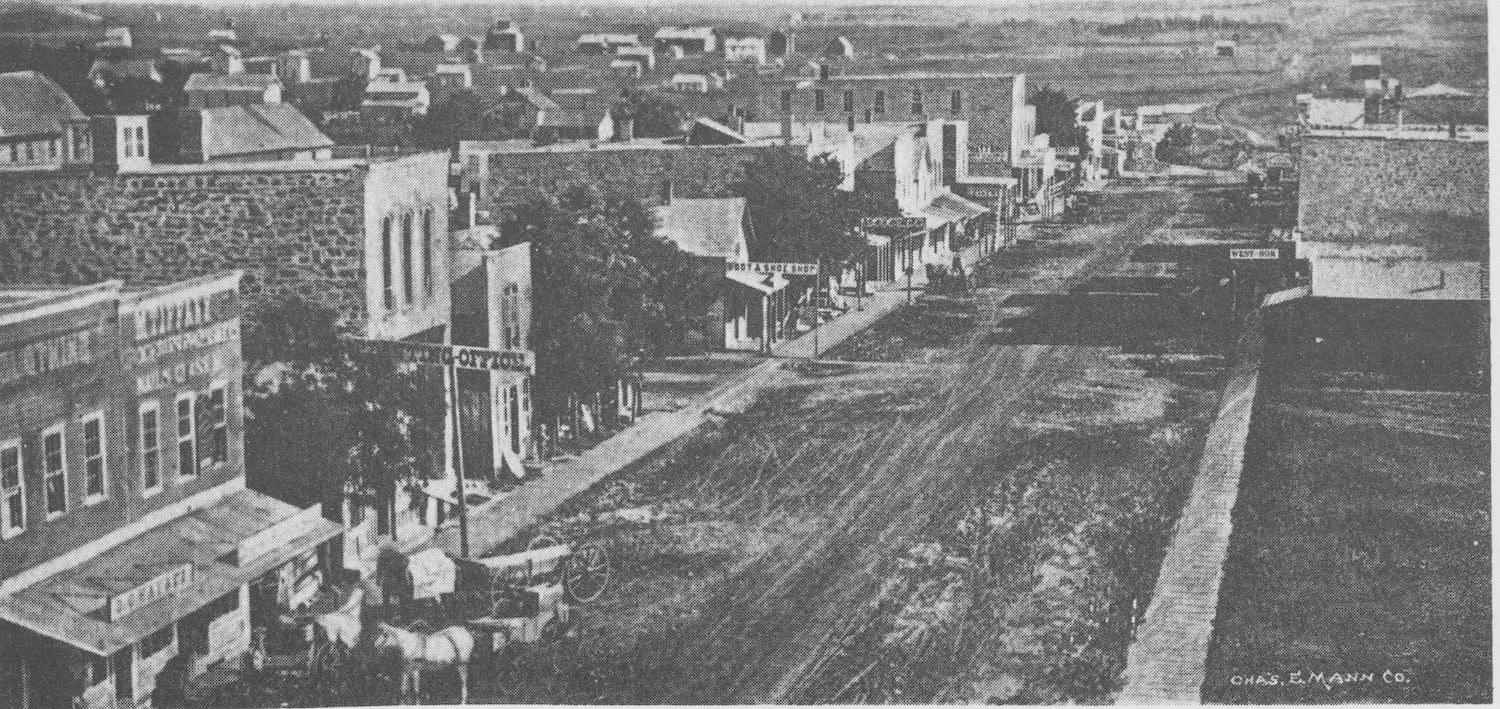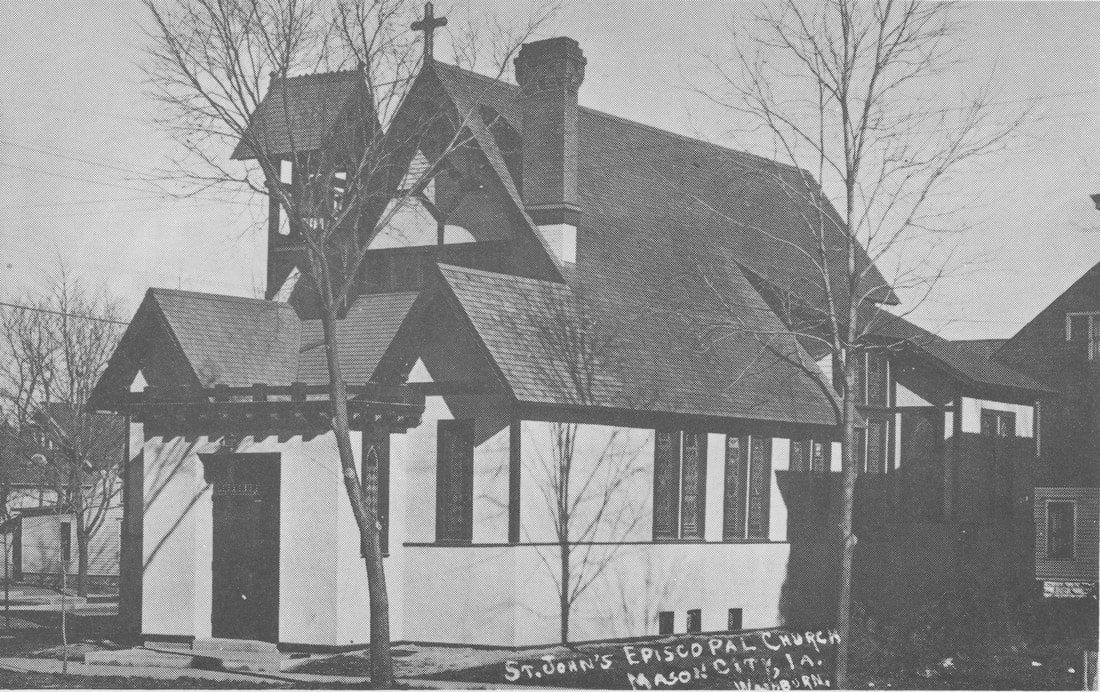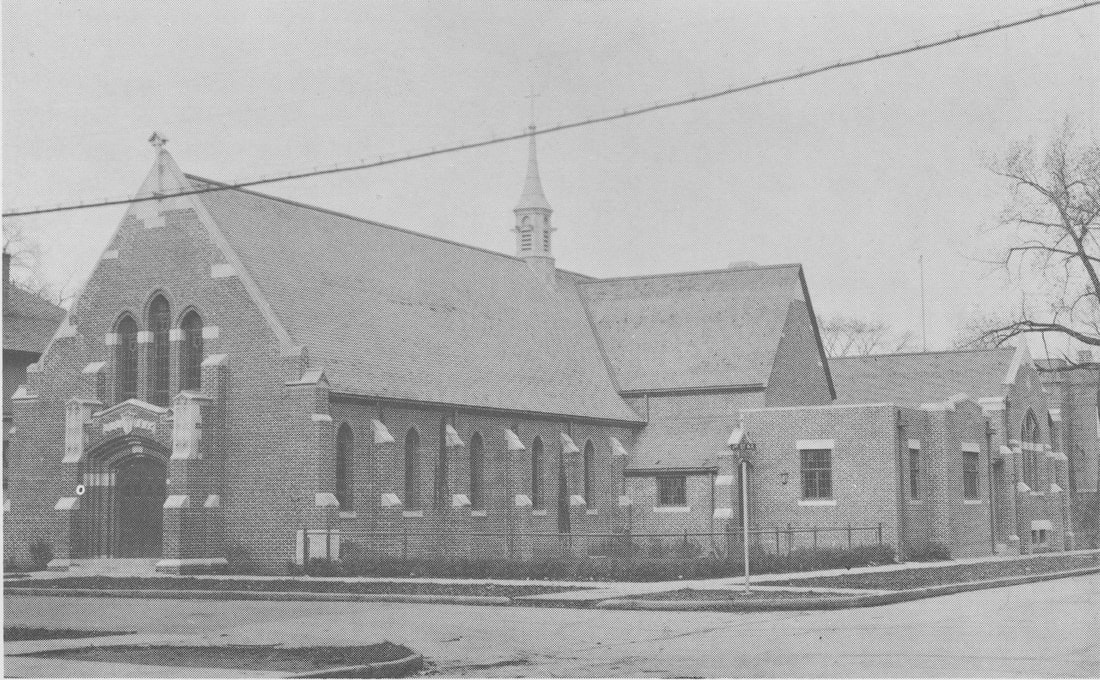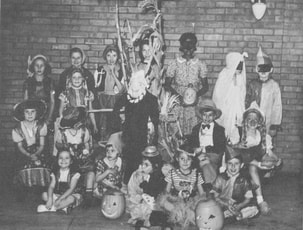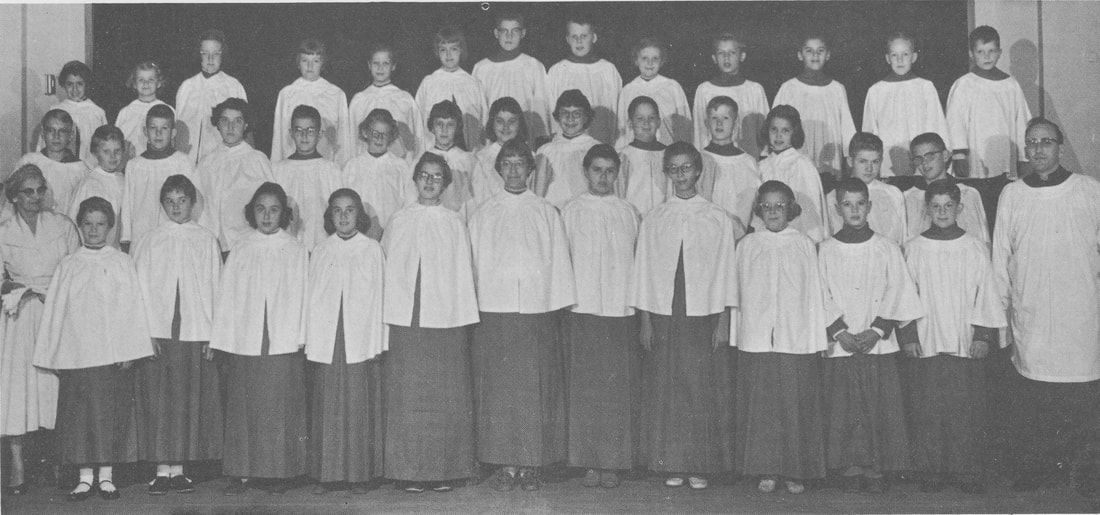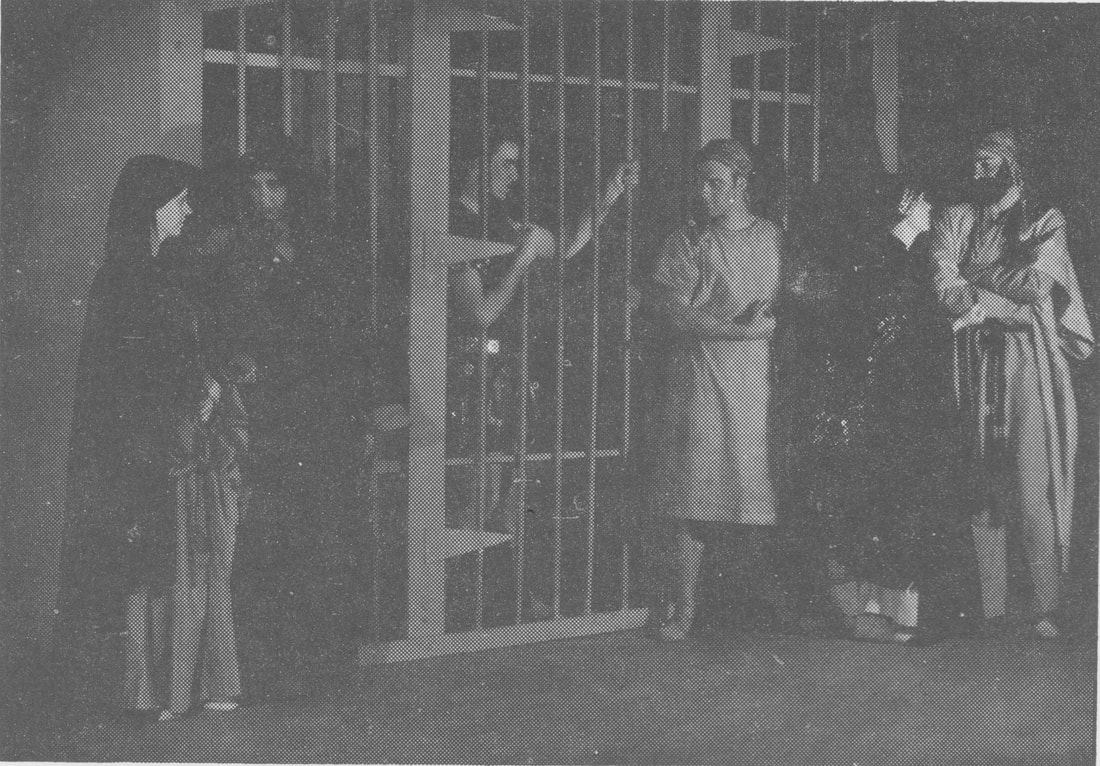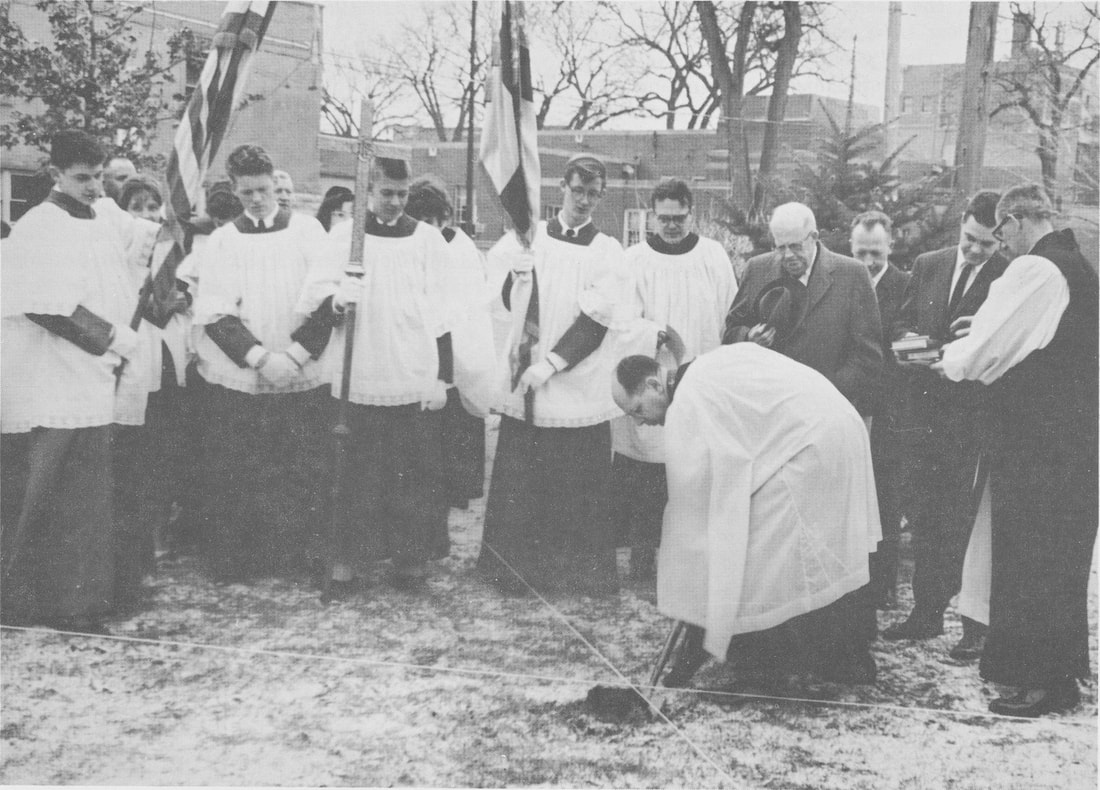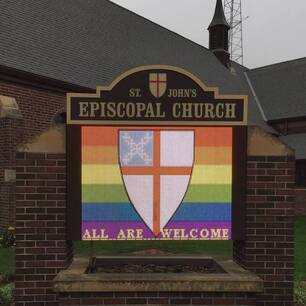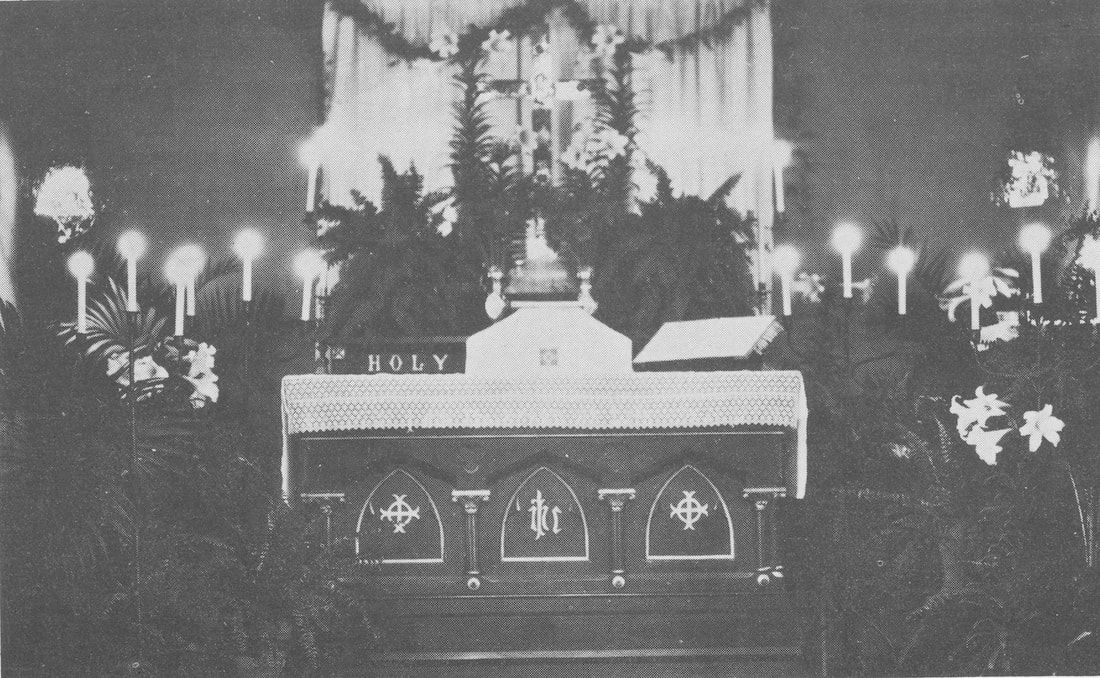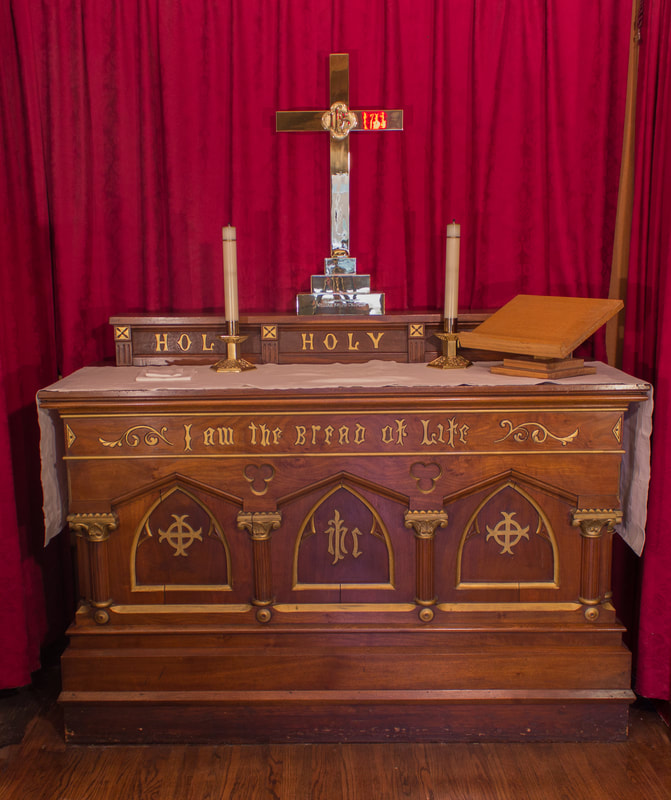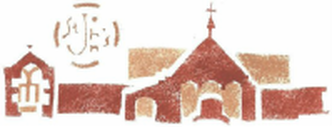The Early Years (1873-1924)
In 1853, John B. Long, George Brenter, and Joseph Hewitt platted the town of Shiboleth on the present site of Mason City, but the pioneer community grew litter in the first 15 years. In 1869 the Milwaukee Railroad came to town, near doubling the population within a year.
Around this same time it was the aim of Bishop Lee to establish a mission in every county in Iowa. In 1873 the Rev. Mr. Kemp, missionary-at-large for the Diocese, arrived in Mason City and organized St. John's Mission, consisting of 28 families. |
In the beginning, services were held on the ground floor of the Mason Building on what is now North Federal and was moved shortly thereafter to the uncompleted Randall Building and, later, the Ensign Building.
Witnessing on the main street in town had some unexpected rewards. About this time a young woman, newly arrived in America from Denmark, was walking along the west side of Main between 1st and 2nd St. NW when she was struck by the sound of a familiar hymn. She followed the strains of music to a nearby door, ascended to the second floor, and discoved the Episcopal group in the midst of their Sunday evening services. She became a life-long member of St. John's, married A. H. Beecher (later a mayor of Mason City), and saw six of her children sing in St. John's choir. |
On May 3, 1877, St. John's Church was admitted to the Diocesan Convention and barely a month later, on June 11, St. John's Church was incorporated under the laws of Iowa.
|
In 1883, with the Rev. W.W. Estabrooke, the foundations of the first church building were being laid and the new building was ready for occupancy by Christmas of that year. This small frame house of worship was erected on the southeast corner of what is now 1st Street N.E. and North Pennsylvania, currently the site of the old YMCA building.
Over the next 50 years, the church grew to over 61 families and 210 persons. And by 1929, the need for a new church building was felt by many. |
One parishioner remembers a particularly rainy Easter when she attended services with her sister, both decked out in new hats. Sitting decorously at the rear of the nave, she became aware of an ominous "plop, plop" somewhere very near. It was near indeed - rainwater was dripping on her sister's elegant new hat. |
The New Church Building (1924-1952)
The vestry authorized the drawing of plans for a new building not to exceed a cost of $50,000. Everyone in the parish was urged to give something, even at the level of five dollars which would by one brick! With the help of a few large contributors, the beautiful new building at 1st and North Pennsylvania became a reality. The new building was of Gothic architecture patterned after an early English village church.
|
When the stone cross was placed over the Pennsylvania entrance, the mason stopped work and called a vestryman to come and actually do that part of the building. |
Finally, at the 8 a.m. service on November 16, 1930 Bishop Harry S. Longley celebrated the final Eucharist in the old frame structure. Following a service of deconsecration the Bishop proceeded to the door of the new church. There he was met by the wardens, H. G. Hawkins and Lee P. Loomis who escorted him to the Bishop's Chair and the dedication services began. |
Not long after, the long dim days of the Great Depression set in. Church attendance and financial support dropped, and the years 1932 to 1935 were particularly difficult for the parish and their indebtedness due to the new building. But during this bleak period, still bright spots shown through including the St. John's Young Peoples Fellowship Vocal music at the church, and staged productions including "Taming of the Shrew", "H. M. S. Pinafore", and "Il Trovatore" on the stage of the Cecil Theatre.
The financial situation of the parish was helped by a unique $12,000 loan gift from Mr. and Mrs. B. C. Way in November of 1938. The loan would become a gift to the church after five years if the parish was free of all other debt by that time and the members showed a progressive interest in their church. Five year later, on November 16, 1943, the mortgage on the building was burned.
St. John's in a Changing World (1952-1973)
The world changed with the end of the great depression and war, and with the shooting due to shop in Korea in a few months. Millions of G. I.'s had come home, married, and gone to school. For the first time in decades, Americans turned out in droves to claim a church affiliation.
The Church School's enrollment grew astronomically. In 1947, a weekly attendance of 15 to 20 youngsters was the norm. By 1953 enrollment had reached 100, with an additional 54 on cradle roll. In a special meeting of the Parish in May of that year, the addition of an education wing was approved at a cost of about $35,000.
The Church School's enrollment grew astronomically. In 1947, a weekly attendance of 15 to 20 youngsters was the norm. By 1953 enrollment had reached 100, with an additional 54 on cradle roll. In a special meeting of the Parish in May of that year, the addition of an education wing was approved at a cost of about $35,000.
Through the years, a large body of Churchmen from Clear Lake had called St. John's their church home. The "Clear Lakers", as they were affectionately designated, became more and more desirous of their own church to the west. In 1957 the mission of St. Andrew's made the dream a reality; in June of that year the vestry voted to terminate the pledges of all "Clear Lakers" and to transfer those pledges to St. Andrew's. Despite this loss, the Parish budget for 1958 exceeded $20,000 for the first time and the new education already seemed to be outgrown.
|
A Church School/Chapel was constructed on the west edge of the church property, adjoining the 1954 educational wing, in 1961. The total cost of the project, including furnishings many of which were gifts, came to nearly $100,000.
In 1963 the largest convention in the history of the Diocese of Iowa, up to that point, was hosted by St. John's in Mason City. In hindsight, the expansion of the building was precipitous, and the the rapid congregation rate slowed proving the increased pledges would no be able to cover the $52,000 mortgage remaining on the project. But through bequests from the estates of Lee P. Loomis and Mrs. B. C. Way bringing the mortgage down to $12,000 and a special Capital Funds drive brought in $17,400 make it possible to liquidate the rectory mortgage in 1968 with a further gift from Mrs. Loomis eradicating all remaining debt in December 1969. The mortgage was officially burned at the 1970 parish annual meeting. |
The Church Today
|
Throughout it's history, St. John's has seen it's ups and it downs, adding excited new pieces to the church and the challenge of maintaining the beautiful building we call home. This trend continues through to today with a new church sign and the need to tuckpoint the bricks of our church.
St. John's Episcopal Church is a beautiful building which mixes the new and upcoming, such as a desire to remodel the old kitchen, with the incredible craftsmanship of the past, such as the stained glass throughout the building. The original church alter stands in the Sanctuary to this day, connecting us to those early years. But the common thread across the past 150 years isn't the building, it is the community of faith that stretches back to a mere 20 years after Mason City itself was established. The Centennial of St. John's Episcopal Church by Jerome Krieger has much more information about the people who have made up this community over the years. We encourage you to take the time to borrow a copy and read it over. And join our community of faith as we worship in our homes, looking forward to the day we can return to the building and friends we call our home. |

